#Native plants Australia
Explore tagged Tumblr posts
Text
Explore the beauty and practicality of edible plants with Newport Native Nursery's guide. This article offers tips on incorporating plants that are both decorative and functional, perfect for a home garden. From vibrant herbs to fruit-bearing shrubs, learn how to create a lush, edible landscape that adds aesthetic value while providing fresh ingredients for your kitchen.
#Home and Garden Décor#edible plants Newport#Edible Gardens#Home garden ideas#Native plants Australia
0 notes
Text
"As solar panels heat up beyond 25°C, their efficiency decreases markedly. Green roofs moderate rooftop temperatures. So we wanted to find out: could green roofs help with the problem of heat reducing the output of solar panels?
Our research compared a “biosolar” green roof — one that combines a solar system with a green roof — and a comparable conventional roof with an equivalent solar system. We measured the impacts on biodiversity and solar output, as well as how the plants coped with having panels installed above them.
The green roof supported much more biodiversity, as one might expect. By reducing average maximum temperatures by about 8°C, it increased solar generation by as much as 107% during peak periods. And while some plant species outperformed others, the vegetation flourished.
These results show we don’t have to choose between a green roof or a solar roof: we can combine the two and reap double the rewards...
How did the panels affect the plants?
In the open areas, we observed minimal changes in the vegetation cover over the study period compared to the initial planted community.
Plant growth was fastest and healthiest in the areas immediately around the solar panels. Several species doubled in coverage. We selected fast-growing vegetation for this section to achieve full coverage of the green roof beds as soon as possible.
The vegetation changed the most in the areas directly below and surrounding the solar panels. The Baby Sun Rose, Aptenia cordifolia, emerged as the dominant plant. It occupied most of the space beneath and surrounding the solar panels, despite having been planted in relatively low densities.
This was surprising: it was not expected the plants would prefer the shaded areas under the panels to the open areas. This shows that shading by solar panels will not prevent the growth of full and healthy roof gardens.

What were the biodiversity impacts?
We used environmental DNA (eDNA) surveys to compare biodiversity on the green roof and conventional roof. Water run-off samples were collected from both roofs and processed on site using portable citizen scientist eDNA sampling equipment to detect traces of DNA shed by the species on the roof.
The eDNA surveys detected a diverse range of species. These included some species (such as algae and fungi) that are not easily detected using other survey methods. The results confirmed the presence of bird species recorded by the cameras but also showed other visiting bird species went undetected by the cameras.
Overall, the green roof supported four times as many species of birds, over seven times as many arthropods such as insects, spiders and millipedes, and twice as many snail and slug species as the conventional roof. There was many times the diversity of microorganisms such as algae and fungi.
Encouragingly, the green roof attracted species unexpected in the city. They included blue-banded bees (Amegilla cingulata) and metallic shield bugs (Scutiphora pedicellata).
How did the green roof alter temperatures?
The green roof reduced surface temperatures by up to 9.63°C for the solar panels and 6.93°C for the roof surfaces. An 8°C reduction in average peak temperature on the green roof would result in substantial heating and cooling energy savings inside the building.
This lowering of temperatures increased the maximum output of the solar panels by 21-107%, depending on the month. Performance modelling indicates an extensive green roof in central Sydney can, on average, produce 4.5% more electricity at any given light level.
These results show we don’t have to choose between a green roof or a solar roof. We can combine them to take advantage of the many benefits of biosolar green roofs.
Biosolar roofs can help get cities to net zero
The next step is to design green roofs and their plantings specifically to enhance biodiversity. Green roofs and other green infrastructure may alter urban wildlife’s activities and could eventually attract non-urban species.
Our green roof also decreased stormwater runoff, removed a range of run-off pollutants and insulated the building from extremes of temperature. A relatively inexpensive system provides all of these services with moderate maintenance and, best of all, zero energy inputs.
Clearly, biosolar green roofs could make major contributions to net-zero cities. And all that’s needed is space that currently has no other use."
-via GoodGoodGood, May 12, 2024
#green#green roof#biosolar#solar power#solar panels#rooftop solar#solarpunk#native plants#australia#sydney australia#biodiversity#conservation#climate change#climate action#climate hope#global warming#temperature#climate adaptation#cooling#good news#hope
2K notes
·
View notes
Text

ground-dwelling grevillea
australian native flower
#photographers on tumblr#western australia#australia#photography#nature photography#nature#original photographers#landscape#landscape photography#lensblr#flower#flowers#flower photography#petals#plants#garden#grevillea#flowercore#moody nature#moody aesthetic#australian native flora#australian native plants#australian native flowers#australian natives#female photographers#original photography#imiging
518 notes
·
View notes
Text


another floristics survey plant
Chamaescilla corymbosa – blue stars or blue squill or mudrut
native to western australia
#nature#ecology#plants#conservation#botany#flora#native plants#australia#native flora#fieldwork#rains fieldwork
45 notes
·
View notes
Text
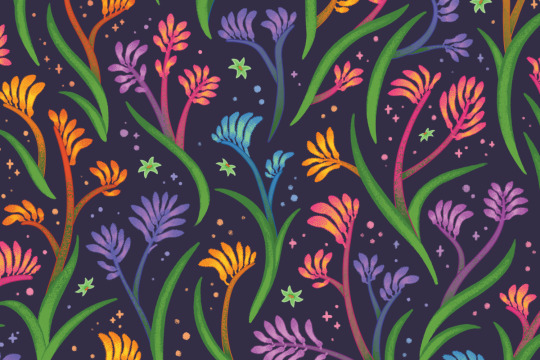
Some rainbow kangaroo paw flowers to brighten your day! (o´∀`o)
Available on all kinds of things here if this pattern floats your boat!
#artists on tumblr#kangaroo paw#kangaroo#australian natives#australian plants#australia#floral#pattern design#autistic artist#colorful#rainbow#whimsical#digital illustration#bright#playful#native plants
144 notes
·
View notes
Text




Grevillea petrophiloides "Pink Pokers"
#south west australia endemic species#western australian native wildflowers#western australia#garden#nature#plants#flowers#flower#gardening#pink#my garden#my photography#pink flowers
13 notes
·
View notes
Photo
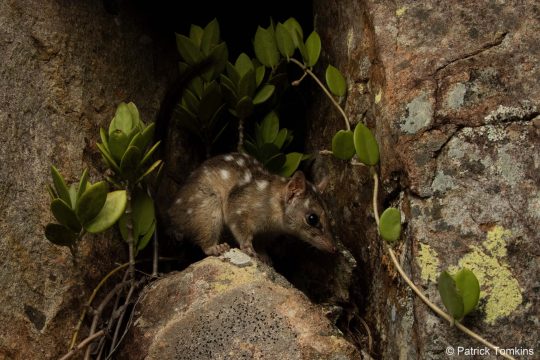
Native hoya and quoll, Mount Emerald, near Mareeba, Queensland
Photographer: Patrick Tomkins
#patrick tomkins#photographer#endangered species#native hoya#plant#quoll#mammal#animal#wildlife#mount emerald#mareeba#queensland#australia#australian geographic#nature
138 notes
·
View notes
Text
youtube
Australian native flowers are in high demand for cut flowers, and can cost a lot in the shops, so why not try growing a few of your own? Clarence suggests some top varieties to try.
But first a word about what is an Australian native - we’re talking here about plants that are from Australia originally, not their ancient Gondwanan relatives such as proteas and leucadendrons, which are native to southern Africa.
Banksias: there’s one for nearly every corner of Australia and they make great cut flowers.
Hakeas also last well in the vase and, while some can be a bit spiky, H. francisiana and H. bucculenta has softer foliage and spectacular flowers. The woody seedpods also look great afterwards. When cutting back, make sure you don’t cut back to bare wood - the stem is more likely to grow back if it still has some foliage on it.
Waratahs are truly spectacular but need shelter, consistent moisture and good drainage so they won’t grow just anywhere. But you could always try a pot using good quality potting mix.
Grevilleas - many hold well in a vase but the sap of some grevilleas in a common allergen so use gloves and eye protection and place them somewhere indoors where they can be admired but not touched.
Short-lived annuals such as Pelargoniums are lovely in a vase, too, and will generously self-seed in the garden.
Kangaroo paws are a classic cut flower, but beware of the hairs on the flowers, which can be an irritant.
Everlasting daisies will grow almost anywhere in southern Australia and their papery flowers dry beautifully as well as bringing colour to a traditional posy.
Foliage - don’t’ forget some grey and green leaves to offset the colour, and growing a few at home can save you a lot of money.
Grasses - their soft, elegant foliage and seedheads can add interest to any bunch.
Picking is a good form of pruning, so don’t be afraid to cut!
How to arrange:
If in doubt, pick a central stem as the main focus, then slowly build up around that, turning the bunch as you go and adding another stem at each point as you turn.
Featured plants:
Protea (Protea sp.)
Leucadendron (Leucadendron sp.)
Firewood banksia (Banksia menziesii)
Coast banksia (Banksia integrifolia)
Grass-leaf hakea (Hakea francisiana)
Red pokers (Hakea bucculenta)
NSW waratah (Telopea speciosissima)
Austral storksbill (Pelargonium australe)
Kangaroo paw (Anigozanthos sp.)
Rosy everlasting (Rhodanthe chlorocephala subsp. rosea)
Paper daisy (Xerochrysum bracteatum ‘Dargan Hill Monarch’)
Kangaroo grass (Themeda triandra)
Filmed on Dharawal Country in Heathcote, NSW
5 notes
·
View notes
Text
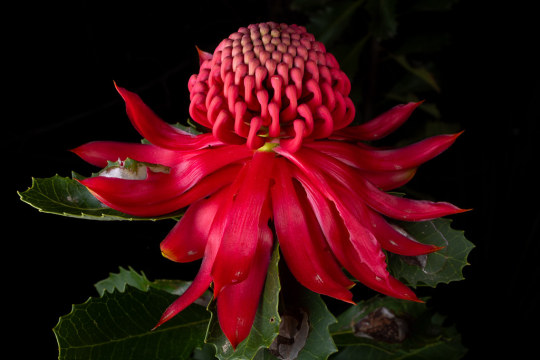
#IFTTT#Flickr#waratah#telopeaspeciosissima#telopea#speciosissima#plantae#tracheophyta#angiospermae#magnoliopsida#proteales#proteaceae#grevilleoideae#embothrieae#embothriinae#sydney#newsouthwales#australia#flower#native#nature#canon#macro#night#flash#jonodashper#jonathondashper#naturephotography#plant
9 notes
·
View notes
Text
Good News - March 22-28
Like these weekly compilations? Support me on Ko-fi! Also, if you tip me on here or Ko-fi, at the end of the month I’ll send you a link to all of the articles I found but didn’t use each week - almost double the content! (I’m new to taking tips on here; if it doesn’t show me your username or if you have DM’s turned off, please send me a screenshot of your payment)
1. Scimitar-horned Oryx: A Story of Global Conservation Success
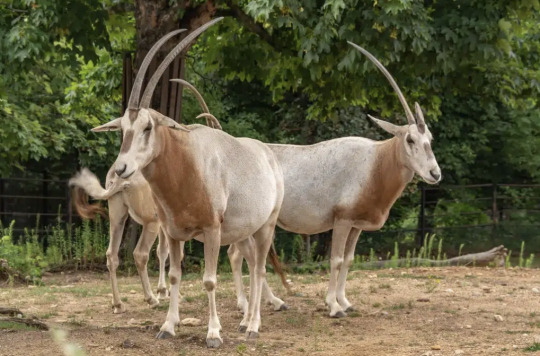
“Eight years following the first reintroductions of the species in a protected range in Chad, the species has been downlisted to ‘Endangered’ [an improvement from “extinct in the wild”] in the most recent IUCN Red List update.”
2. Thailand moves closer to legalising same-sex marriage

“Under the law, it describes a marriage union as one between two individuals, rather than a man and a woman. It will give LGBTQ+ couples the ability to adopt, have equal access to marital tax savings, rights to property and the ability to decide medical treatment when their partner is incapacitated.”
3. Juvenile platypus found in NSW: a sign of breeding success
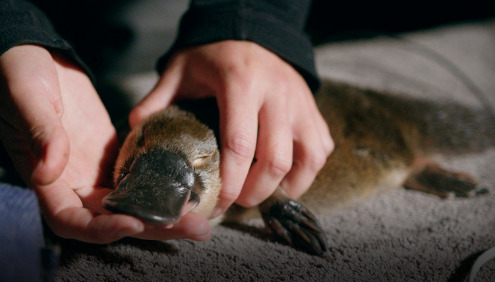
“A baby platypus was discovered in the Royal National Park less than a year after 10 were reintroduced to the area, marking the end of a half-century local extinction. […] “Finding the juvenile platypus is a clear sign the reintroduced population is not just surviving but thriving, adapting well to their environment, and contributing to the genetic diversity and resilience of this iconic species.””
4. New Laws Protect Bird-Friendly Yards From Neighborhood Rules
“A blossoming legislative trend prevents homeowners associations, which set landscaping rules for a growing number of Americans, from forbidding native plants.”
5. Bookstores Around The World Are Flourishing Again

“[I]t’s not just the major chains like Barnes & Noble that are flourishing, as the US book sales market continues to both grow and diversify, the majority of the retail book market is controlled by small indie stores.”
6. 'Like a luxury condominium': Providence zoo unveils new red panda habitat

“"Kendji and Zan's new home boasts a spacious two-story, climate-controlled indoor space designed to mimic their natural Himalayan habitat," the zoo said in a news release. "This ensures their well-being regardless of fluctuating Rhode Island temperatures and humidity."”
7. The first CULTIVATE Mobile Research Lab on food sharing in Barcelona
“[Volunteers] engaged in growing, cooking and eating food together, and redistributing surplus food, as well as other actors involved in food sharing and sustainable food systems in Barcelona and its surroundings.”
8. New Methane Rule Will Reduce Natural Gas Waste, Generate Money for Taxpayers, Help Address Climate Change

“The Bureau of Land Management’s final rule on reducing methane waste from oil and gas production on public lands will conserve critical energy resources, with the added benefit of decreasing toxic pollution [….] The rule will benefit wildlife, public lands, water resources, and nearby communities. By requiring royalties for wasted methane, the rule will also generate more than $50 million each year for American taxpayers.”
9. 'Exceptional' Two-Headed Snake Undergoes Surgery in Missouri

“Tiger-Lily's [the snake’s] abnormal ovaries were then removed during surgery at the Saint Louis Zoo Endangered Species Research Center and Veterinary Hospital on March 11. The procedure went smoothly, with her ovaries being successfully removed, and the snake is recovering well.”
10. Aruba Embraces the Rights of Nature and a Human Right to a Clean Environment

“A draft constitutional amendment would make the Carribean nation the second country in the world to recognize that nature has the right to exist.”
March 15-21 news here | (all credit for images and written material can be found at the source linked; I don’t claim credit for anything but curating.)
#hopepunk#good news#deer#conservation#endangered#animals#africa#thailand#lgbtq#gay rights#gay marriage#same sex marriage#platypuses#australia#hoa#native plants#wildflowers#bookstore#books#zoo#red panda#barcelona#spain#food#food insecurity#interdependence#natural gas#climate change#snake#palm beach
7 notes
·
View notes
Text
My home was a May Gibbs house when I was growing up. Consequently, I was scared of the Big Bad Banksia Men.
I now want to plant them around my new south coast home.
Any tips for poor soil, windy in winter, part shaded in winter?
This one is in a nearby national park.

3 notes
·
View notes
Text


aussie here, cleared my backyard 12 months ago and put some 🇦🇺 seedlings in.
it's just my own solo project and I work full time so I've tried to keep on top of the seedlings health as much as I can - so here's to a year's worth of growth - and all the cool bugs, birds, lizards and frogs that have come to visit since 🥰
6 notes
·
View notes
Text

21/31 days of lensbaby - velvet 85 lens
western australian native pea flower
#31 days of lensbaby#lensbaby#photographers on tumblr#original photographers#nature photography#western australia#photography#nature#australia#lensblr#landscape#landscape photography#flower#flowers#flower photography#female photographers#female artists#artists on tumblr#imiging#western australian wildflower#australian native flowers#australian native plants
237 notes
·
View notes
Text
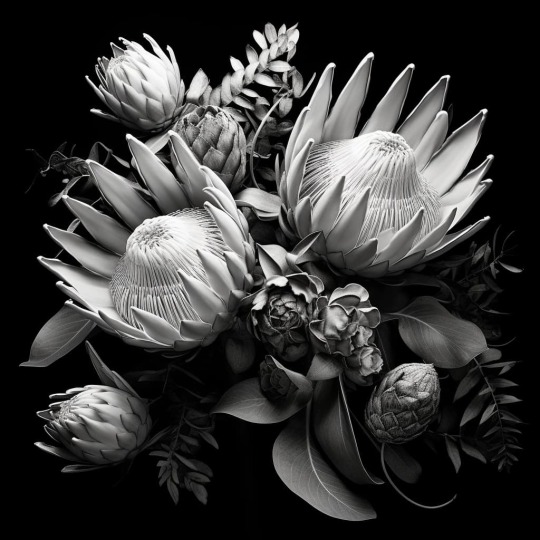
ℐ𝓃𝓉𝓇𝑜𝒹𝓊𝒸𝓉𝒾𝑜𝓃 𝒯𝑜 𝒮𝒽𝒶𝒹𝑜𝓌 𝒲𝒾𝓉𝒸𝒽𝒸𝓇𝒶𝒻𝓉 ℬ𝑜𝓉𝒶𝓃𝒾𝒸𝓈 𝒫𝓇𝓉 𝟸 Aɴ Aᴜsᴛʀᴀʟɪᴀɴ Gᴜɪᴅᴇ Tᴏ Usᴇғᴜʟ Hᴇʀʙs﹐ Fʟᴏᴡᴇʀs ﹠ Oᴛʜᴇʀ Bᴏᴛᴀɴɪᴄᴀʟs. Australian native plants are a rich source of botanical diversity, offering a multitude of herbs, shrubs, and trees that have been utilized for various purposes, from culinary and medicinal to spiritual and ritualistic. In the realm of shadow witchcraft, which is often associated with dark and mysterious practices, many native Australian plants hold a sacred and sometimes even poisonous significance. These plants are revered for their unique properties and the connections they establish between practitioners and the spirit world. Many plants, herbs, flowers and other botanicals Witches use in the Northern Hemisphere are not available in Australia- the following are commonly found throughout Australia and are respectfully used by the custodians of the land, and its sacred Elders.
One of the most iconic and potent Australian native plants associated with shadow witchcraft is the Brugmansia, commonly known as the Angel's Trumpet or Daytura. This plant contains alkaloids that can induce hallucinations and visions when ingested or inhaled. For shadow witches, Brugmansia is often used in ritualistic settings to commune with the spirit world and gain insights into the mysteries of the beyond. However, its poisonous nature makes it a plant to be handled with extreme caution.
Another plant with a deep connection to shadow witchcraft is the Duboisia hopwoodii, commonly referred to as Pitcher Plant. This carnivorous plant produces toxic compounds, including scopolamine and atropine, which can induce hallucinations and delirium when ingested. Shadow witches are known to use this plant to enhance their psychic abilities, gain insight into the hidden realms, and enter altered states of consciousness.
The Tasmanian Devil's Marbles, scientifically known as Euphorbia obesa, are a group of succulent plants native to Australia. Their peculiar appearance has led them to be associated with mysticism in the realm of shadow witchcraft. These plants are believed to contain energy that can be harnessed for protection, divination, and banishing negative influences. Ingesting any part of these plants can be toxic, making them a powerful but perilous tool in the hands of shadow witches.
The Stinking Roger, or Tagetes minuta, is another Australian native plant with a connection to shadow witchcraft. It is known for its pungent odor, which is said to repel evil spirits and negative energies. Shadow witches often use this plant as a protective herb in rituals and spells to create a barrier against malevolent forces. It is not inherently toxic but should be used cautiously due to its strong aroma.
The Sandpaper Fig, or Ficus coronata, is a bushy native Australian plant that has been associated with shadow witchcraft due to its unique texture and appearance. The leaves of this plant have a sandpaper-like texture, symbolizing the concept of "rough magic." Shadow witches may use the Sandpaper Fig in spells and rituals to manifest change, overcome obstacles, and disrupt the status quo. Ingesting the leaves is not recommended, as they may cause digestive discomfort.
The Smokebush, or Conospermum stoechadis, has significance in shadow witchcraft due to its ethereal appearance and the mystical aura it emits. Its unique, cloud-like flower clusters give it an otherworldly quality, making it a plant associated with the veiled realms. Shadow witches may use the Smokebush in spells and rituals to call upon the spirits of the departed or to enhance divinatory abilities. While not inherently toxic, it should be used with respect and care.
The mysterious Black Kangaroo Paw, or Anigozanthos manglesii, is a plant associated with shadow witchcraft due to its striking dark color and its symbolism as a gateway to the hidden realms. Shadow witches may use the Black Kangaroo Paw in rituals to explore the shadow self, work with the energies of transformation, and connect with ancestral spirits. Ingesting any part of this plant is not recommended, as it can be potentially harmful.
The Australian native Sturt's Desert Pea, or Swainsona formosa, holds a sacred place in the practices of shadow witchcraft due to its striking crimson flowers and its connection to the spirit world. This plant is believed to be a bridge between the living and the deceased. Shadow witches may use the Sturt's Desert Pea in rituals to communicate with the souls of the departed and seek guidance from the other side. While the plant itself is not poisonous, it should be used with reverence for its spiritual significance.
The Purple Loosestrife, or Lythrum salicaria, is a plant native to Australian wetlands and is linked to shadow witchcraft due to its vibrant and alluring appearance. Shadow witches may use this plant in love spells and enchantments to manipulate the emotions and desires of others. While not poisonous, it should be used with ethical considerations and an awareness of the potential consequences.
The Sundew, or Drosera spp., is a group of carnivorous plants native to Australia, known for their glistening, sticky tentacles that trap insects. Shadow witches may incorporate the Sundew in their practices to harness the energy of entrapment, binding, and control. While not poisonous to humans, these plants are fascinating symbols of the shadowy aspects of nature.
The Tasmanian Blue Gum, or Eucalyptus globulus, holds significance in the world of shadow witchcraft due to its association with protection and purification. Shadow witches may use its leaves in rituals to banish negative influences and ward off malevolent spirits. While not toxic, the essential oils from this plant should be handled with care and diluted properly.
The Blackwood, or Acacia melanoxylon, is an Australian native tree with dark wood and a deep, mystical significance in shadow witchcraft. Its timber is often associated with transformation, as it is used to craft ritual tools and sacred items. Shadow witches may seek to connect with the spirit of the Blackwood tree to channel its energies for personal growth and empowerment. While not poisonous, the tree's wood should be sustainably harvested to honor its sacred connection.
The Wollemi Pine, or Wollemia nobilis, is a rare and ancient conifer native to Australia that has a profound connection to shadow witchcraft. Its status as a living fossil and its resilience throughout history make it a symbol of hidden knowledge and endurance. Shadow witches may use the Wollemi Pine to gain insight into ancient wisdom and connect with the spirits of the past. Harvesting this tree from the wild is strongly discouraged, as it is a critically endangered species.
The Velvet Bush, or Lasiopetalum schultzei, is a native Australian shrub associated with shadow witchcraft for its velvety, dark foliage. Shadow witches may use this plant in spells and rituals to connect with the energies of mystery and transformation. While not toxic, the Velvet Bush should be used with reverence for its symbolic significance in shadow magic.
The Grey Spider Flower, or Grevillea buxifolia, is a native Australian plant with spidery, otherworldly flowers that have a mystical quality associated with shadow witchcraft. Shadow witches may use this plant in rituals to communicate with spirit guides and to tap into the secrets of the unseen realms. While not poisonous, the Grey Spider Flower should be approached with respect for its spiritual significance.
The Black Kangaroo Paw, or Anigozanthos manglesii, is a unique and striking Australian native plant that holds a special place in shadow witchcraft due to its dark color and symbolic connection to the hidden realms. Shadow witches may use the Black Kangaroo Paw in their rituals to explore the mysteries of the shadow self, facilitate transformation, and communicate with ancestral spirits. While not inherently toxic, this plant should be handled with care and respect for its sacred associations.
The Devil's Twine, or Cassytha glabella, is a parasitic plant native to Australia that has gained notoriety in shadow witchcraft due to its enigmatic growth and ethereal qualities. Shadow witches may incorporate the Devil's Twine in their spells and rituals to enhance their psychic abilities and explore the boundaries between the living and the spirit world. While not poisonous, it should be used with caution, as it is a plant that embodies both mystery and connection.
The Finger Lime, or Citrus australasica, is a small, citrus-bearing tree native to Australia, and its unique fruit is associated with shadow witchcraft for its symbolism of hidden revelations and unexpected knowledge. Shadow witches may use the Finger Lime in rituals to reveal hidden truths and access concealed information. While not toxic, the fruit should be used with intention and respect for its symbolic significance.
The Desert Bloodwood, or Corymbia opaca, is a native Australian tree with dark, gnarled bark and a connection to shadow witchcraft. Its resilience in harsh environments and its deep-rooted nature make it a symbol of inner strength and transformation. Shadow witches may use the Desert Bloodwood in rituals to access their inner power, overcome obstacles, and harness the energy of change. While not toxic, this tree should be approached with a sense of reverence for its symbolic associations.
The Australian Shepherd's Purse, or Capsella bursa-pastoris, is a plant with small, heart-shaped seedpods and is associated with shadow witchcraft for its symbolism of hidden desires and secrets. Shadow witches may use the Shepherd's Purse in spells and rituals to uncover concealed truths and tap into the realm of the subconscious. While not toxic, it should be used with a sense of intention and respect for its symbolic significance.
The Queen of the Night, or Selenicereus grandiflorus, although not native, it can be commonly found. Queen of the Night is a cactus with night-blooming, fragrant flowers that have associations with shadow witchcraft. The mysterious and ephemeral nature of these flowers makes them symbols of hidden desires and forbidden knowledge. Shadow witches may incorporate the Queen of the Night in their practices to access the hidden aspects of themselves and explore the depths of their desires. While not poisonous, the cactus should be handled with care due to its spines.
The Flannel Flower, or Actinotus helianthi, is a native Australian plant with delicate, daisy-like flowers that have connections to shadow witchcraft due to their ethereal beauty. Shadow witches may use the Flannel Flower in spells and rituals to invoke the energies of enchantment, attraction, and the hidden mysteries of nature. While not toxic, this plant should be approached with respect for its symbolic associations. Eucalyptus, often referred to as gum trees, is an iconic Australian genus, comprising over 700 species. It has a long history of use by Indigenous Australians for medicinal purposes and forms an integral part of their cultural heritage. The leaves of many Eucalyptus species are rich in essential oils, making them valuable in the production of traditional remedies and modern pharmaceuticals. Additionally, the bark and leaves of various Eucalyptus species have been used in indigenous medicine and witchcraft practices. Kangaroo Paw, or Anigozanthos spp, is a group of plants native to southwestern Australia and is known for its strikingly unique flowers resembling a kangaroo's paw. In Aboriginal culture, the plant holds significance due to its use in traditional medicines and rituals. Its vibrant colors and distinctive shape make it a powerful symbol in shadow witchcraft, often associated with transformation and adaptability. Banksia, a diverse genus of shrubs and trees, is also deeply rooted in Aboriginal culture, with numerous species being used for food, medicine, and tools. The Banksia serrata, known as Old Man Banksia, is particularly noteworthy for its gnarled appearance and is associated with ancestral spirits in Aboriginal mythology. In shadow witchcraft, its seeds and woody cones are believed to possess protective qualities. Acacia, commonly known as wattle, is a diverse genus comprising over 1,000 species in Australia. The Golden Wattle (Acacia pycnantha) is the national floral emblem and has cultural significance for Indigenous Australians. Acacia has a long history of use in both traditional medicine and magical practices, with its fragrant blooms often employed in spells related to love, purification, and psychic enhancement.
The Tasmanian Blue Gum, or Eucalyptus globulus, is a species of Eucalyptus tree known for its aromatic leaves and distinctive blue-green foliage. It is often used for spiritual and cleansing rituals in shadow witchcraft, particularly for its association with psychic insight and dream work. In some Indigenous Australian cultures, the Tasmanian Blue Gum holds significance as a source of timber, tools, and medicines.
The Black Wattle, or Acacia mearnsii, is an invasive species originally from Australia but now found in various regions around the world. It has significance in both traditional Aboriginal medicine and shadow witchcraft, where it is often used to enhance one's psychic abilities and intuitive insights.
The Waratah, or Telopea speciosissima, is a striking native shrub with brilliant red flower heads that are a source of great beauty and significance in Australian flora. It has been used in Indigenous culture for its vibrant appearance and in shadow witchcraft for its associations with love, passion, and transformation.
The Xanthorrhoea, commonly known as grass trees, are iconic Australian plants with tall, slender trunks and tufted, grass-like leaves. These plants have various uses in Aboriginal culture, from making tools and weapons to providing food. In shadow witchcraft, the resin produced by Xanthorrhoea is often used for its protective and purifying qualities.
The Snake Vine, or Hibbertia scandens, is a twining climber native to eastern Australia. It gets its name from the twisted and serpentine appearance of its stems. This plant has been associated with various magical and medicinal uses in both Indigenous and witchcraft traditions, often linked to its sinuous form and its connection to the serpent archetype including the Dreamtime Serpent and other Australian ancestral spirits and deities. The Stinging Nettle, or Urtica incisa, is a native Australian plant known for its stinging hairs that cause discomfort when touched. In some forms of shadow witchcraft, this plant's stinging properties are harnessed for protective spells, curses, or rituals involving pain and transformation.
The Native Violet, or Viola hederacea, is a small, creeping plant with dainty violet flowers. It has cultural importance in some Aboriginal communities and is associated with protection and healing in shadow witchcraft, particularly in matters of emotional well-being.
The Pigface, or Carpobrotus spp, is a succulent plant with colorful, daisy-like flowers that are found in coastal regions. In some Indigenous cultures, the Pigface has culinary and medicinal uses. In shadow witchcraft, it is associated with protection, especially in coastal areas, and is believed to have grounding properties.
The Geraldton Wax, or Chamelaucium uncinatum, is a shrub known for its abundant pink or white flowers. It is used in shadow witchcraft for its qualities of purification and protection, often used in rituals and spells to cleanse spaces and ward off negative energies.
The Bush Tomato, or Solanum centrale, is a small fruit-bearing plant found in arid regions of Australia. It has culinary and medicinal uses in Indigenous cultures and is often associated with fertility, abundance, and nourishment in shadow witchcraft.
The Hakea, a diverse genus of shrubs and small trees, is native to Australia and has significant cultural and ecological importance. In shadow witchcraft, the Hakea is associated with resilience, adaptability, and protection, especially in the face of adversity.
The Poisonous Gimpi Gimpi, or Dendrocnide moroides/excelsa, understood to be a Kabi Kabi- a word meaning 'devil'- is notorious for its intensely painful stinging hairs, making it one of the most feared plants in Australia. In shadow witchcraft, its venomous nature is harnessed for curses and hexes, symbolizing the power to inflict pain and suffering.
The Desert Rose, or Gossypium sturtianum, is a striking, pink-flowering shrub native to arid regions. It is used in shadow witchcraft for its associations with transformation, resilience, and blooming in harsh conditions.
The Sturt's Desert Rose, or Gossypium sturtianum, is a hardy shrub native to arid regions of Australia, known for its striking pink flowers. Shadow witchcraft, is often associated with endurance, survival, and the ability to thrive in challenging environments.
The Balaustion, or Callistemon spp, is a genus of shrubs commonly referred to as bottlebrushes due to their cylindrical, brush-like flowers. It has significance in Indigenous cultures and is used in shadow witchcraft for its symbolism of cleansing, purification, and renewal.
The Blackthorn, or Bursaria spinosa, is a native Australian shrub with sharp, thorny branches and white flowers. It has been used in Indigenous medicine and holds a dark symbolism in shadow witchcraft, often associated with protection, barriers, and defensive magic.
The Fairy Fan Flower, or Scaevola spp, is a delicate, trailing plant with fan-shaped flowers. It is used in shadow witchcraft for its associations with grace, adaptability, and the whimsical world of the fae.
The Kangaroo Apple, or Solanum aviculare, is a native Australian plant with greenish-yellow fruit. It has been used in traditional medicine by Indigenous communities and is associated with transformation, shape-shifting, and altered states of consciousness in shadow witchcraft.
The Weeping Myall, or Acacia pendula, is a distinctive tree with pendulous branches and has significance in Indigenous cultures. In shadow witchcraft, it is associated with emotional release, healing, and purification.
The Yellow Alder, or Turnera ulmifolia, is a small shrub with bright yellow flowers. It has been used in Indigenous medicine and is associated with enhancing intuition and clairvoyance in shadow witchcraft.
The Tea Tree, or Leptospermum spp, is a group of evergreen shrubs and small trees known for their antibacterial and healing properties. In shadow witchcraft, the Tea Tree is often used for cleansing and protection, especially in rituals involving purification and banishing negativity.
The Silver Banksia, or Banksia marginata, is a coastal shrub with silvery leaves and cylindrical flower spikes. It is used in shadow witchcraft for its protective qualities and its ability to ward off negative energies. The Grasstree, or Xanthorrhoea spp, is a group of slow-growing, tree-like plants with tall flower spikes. It has cultural significance in some Aboriginal communities and is associated with longevity, wisdom, and protection in shadow witchcraft.
The Emu Bush, or Eremophila spp, is a group of shrubs with colorful, tubular flowers. It has been used in Indigenous medicine and is associated with healing, transformation, and psychic abilities in shadow witchcraft.
The Dorrigo Pepper, or Tasmannia stipitata, is a native Australian shrub with small, peppery berries. It has been used in traditional Indigenous cuisine and is often associated with spicy, transformative energies in shadow witchcraft.
The Quandong, or Santalum acuminatum, is a small tree with bright red fruit. It holds culinary significance in Indigenous cultures and is used in shadow witchcraft for its associations with vitality, passion, and protection. Australia's native herbs and plants encompass a vast and diverse botanical tapestry, with deep roots in both Indigenous culture and the realm of shadow witchcraft. The connections between these plants and their spiritual and magical attributes are rich and complex, reflecting the intricate relationship between the natural world and the human psyche in this unique and ancient land. Whether used for healing, protection, transformation, or other mystical purposes, these native Australian plants continue to play a significant role in the spiritual and cultural fabric of the continent. Should you have any questions about any native flora in your area and what magical/spiritual qualities they hold- feel free to ask the questions and I will answer to the best of my abilities.
My qualifications are rooted in an in-depth understanding of Australian medicinal plants, their profound medicinal values, and their sacred applications within indigenous practices cherished by the ancestral people of this land. Through years of dedicated research and engagement with indigenous communities, I have acquired a comprehensive knowledge of the unique flora found across Australia and the remarkable healing properties they possess. This knowledge extends beyond mere botanical expertise; it delves into the cultural, spiritual, and traditional significance of these plants in the daily lives and sacred rituals of indigenous peoples.
In addition to my hands-on experience, I have also earned an advanced diploma in herbal medicine, which further deepens my expertise in harnessing the therapeutic potential of native Australian plants. This formal education has enabled me to apply a scientific perspective to the rich traditional wisdom I have gained from indigenous communities, bridging the gap between ancient knowledge and contemporary herbal medicine practices. It equips me with the skills necessary to analyze, extract, and prepare medicinal remedies from these plants, ensuring they are used safely and effectively.
My immersion in the indigenous communities of Australia has been a transformative and invaluable aspect of my journey. By sitting with numerous indigenous families, I have been fortunate enough to witness and participate in their sacred rituals and medicinal practices, thereby enriching my knowledge with first-hand experiences and insights. This unique opportunity has allowed me to not only learn about the medicinal properties of these plants but also understand the spiritual and cultural contexts in which they are utilized. This profound connection to the sacred land and its people has deepened my respect for their traditions and their incredible contributions to the field of herbal medicine, making me well-equipped to honor and preserve this rich heritage. © Dʏsʜᴀɴᴋᴀ/Oᴅᴇᴛᴛᴇ ₂₀₂₃
#australian witch#native plants#herbology#Magical Properties of Australian Flora & Fauna#Witches of Australia#Magical Plants#Magical World#Shadow Magic#Shadow Witchcraft#Shadow Witchcraft in Australia#Magical Australia#Magical & Medicine Plants of Australia#The Significance of Australian Plants#Witchy herbs#Witches of the World#Shadow Witch#Indigineous Medicine#Witches of Tumblr#witches#A Witches Garden#Our Sacred Earth#The Mother Land#Ancestral Vibes#Respect Our Earth#Articles#Witchcraft Articles#Spiritual Articles#Witchy Wisdom#Medicine of Austraia#Our Plants
13 notes
·
View notes
Photo

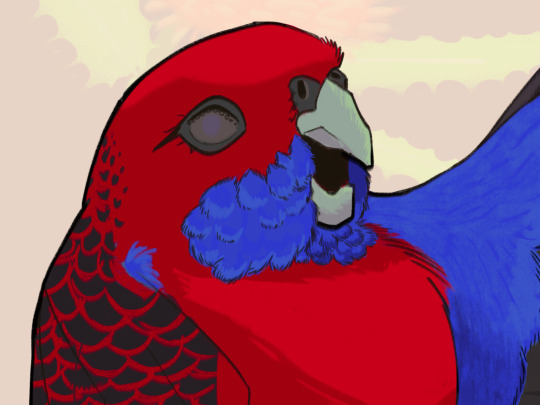
Bird sings with open wings - procreate
The bird in the picture is a crimson rosella native to Australia. Absolutely stunning birds I’m so glad I get to see them everyday.

This is Ricky (named after Ricky Jervais) and he was the first bird to visit our house when we first moved in and he has visited ever since
I will most likely be drawing the other birds/birds that have visited our house so stay tuned!
#brokendeerteeth#art#my art#crimson rosella#native plants#Australia#bottle brush#Eucalyptus#Ricky#ricky jarvais#australian birds#native birds#procreate
29 notes
·
View notes
Text
sona e ni:
soko

linluwi

linluwi soko

linluwi kasi

ma pi kasi mute

---
ma pi kasi mute la ma wile jo e ijo mute.
ni li wile jo e kasi. taso kin la ni li wile jo e linluwi kasi.
kasi en linluwi kasi li wile e linluwi soko.
soko en linluwi soko li moku e moli. ona li pali e lon sin.
ona li pona.
taso la, tenpo pi kasi weka la, soko li moli. linluwi soko li moli.
tan tenpo ni la linluwi kasi li moli. kasi li moli. ma pi kasi mute li moli.
tenpo pi kasi moli la sina li moli. mi li moli. ale li moli.
ni li ike.
o pana li moku tawa ma pi kasi mute!
o weka ala la sina kama weka e kasi moli tan ma pi kasi mute!

O WEKA ALA!
kasi moli la ni li o weka ala! ni li moku pi linluwi soko. linluwi soko li moku pi linluwi kasi.
kin la, kasi moli li lon tomo e pipi mute! akesi mute! kin la soweli lili. waso en soweli suli li moku tawa e soweli lili.
ale li wile jo e kasi moli <3
#toki pona#toki pona taso#im finding it legitimately hard to think in english aafter writing this#please don't remove dead wood or plants from forests unless you've been told to do so by the land managers#if you live in australia don't do it at all unless you are indigenous FROM the land and are working with the indigenous managers of the lan#or you have been asked to do so by the native title holders#the ecosystem needs it very much#i know its cold and i know you want firewood but please dont take it from the ecosystem okay?
4 notes
·
View notes